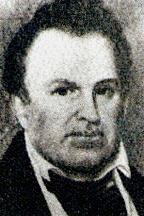
The 2004 United States presidential election in Ohio took place on November 2, 2004, and was part of the 2004 United States presidential election. Voters chose 20 representatives, or electors to the Electoral College, who voted for president and vice president. Ohio was won by incumbent President George W. Bush by a 2.10% margin of victory. Prior to the election, most news organizations considered Ohio as a swing state. The state's economic situation gave hope for John Kerry. In the end, the state became the deciding factor of the entire election. Kerry conceded the state, and the entire election, the morning following election night, as Bush won the state and its 20 electoral votes.

The 1806–07 United States House of Representatives elections were held on various dates in various states between April 29, 1806 and August 4, 1807. Each state set its own date for its elections to the House of Representatives before the first session of the 10th United States Congress convened on October 26, 1807. They occurred during Thomas Jefferson's second term. Elections were held for all 142 seats, representing 17 states.

The 1802–03 United States House of Representatives elections were held on various dates in various states between April 26, 1802 and December 14, 1803. Each state set its own date for its elections to the House of Representatives, either before or after the first session of the 8th United States Congress convened on October 17, 1803. They occurred during President Thomas Jefferson's first term in office.

William W. Irvin also spelled Irwin was a 19th-century lawyer, farmer, politician, and two-term U.S. Representative from Ohio from 1829 to 1833.

The 1806–07 United States Senate elections were held on various dates in various states. As these U.S. Senate elections were prior to the ratification of the Seventeenth Amendment in 1913, senators were chosen by state legislatures. Senators were elected over a wide range of time throughout 1806 and 1807, and a seat may have been filled months late or remained vacant due to legislative deadlock. In these elections, terms were up for the senators in Class 3.

Ohio elected its members October 8, 1816.

The 1810 census revealed dramatic population growth in Ohio since 1800, resulting in its representation increasing from a single Representative to six, resulting in the State being broken up into 6 districts, abolishing the at-large district. Jeremiah Morrow (Democratic-Republican), who had served since Ohio achieved statehood in 1803, retired to run for U.S. Senator, so that all six seats were open. Its elections were held October 13, 1812.

North Carolina elected its members August 15, 1806.

Maryland elected its members October 6, 1806.
Massachusetts elected its members November 3, 1806.

New Hampshire elected its members August 25, 1806.

The Federalists ran a mixed ticket consisting of 2 Federalists and 4 Democratic-Republicans, one of whom was also on the Democratic-Republican ticket. The Federalists capitalized on resentment over the replacement on the official Democratic-Republican ticket of Ebenezer Elmer, from South Jersey, with Thomas Newbold from Monmouth County and the retention of James Sloan. This ticket was formed too late to gain sufficient support, but the Federalists did do much better in state elections that year than they had in previous elections.

Rhode Island elected its members August 26, 1806. Rhode Island law required a majority of votes to win. In this election, only one candidate won a majority on the first ballot, and so a run-off election was required to choose the second seat.

Ohio held its elections October 11, 1814.

Vermont elected its members September 2, 1806.

The 2020 United States House of Representatives elections in Ohio were held on November 3, 2020, to elect the 16 U.S. representatives from the state of Ohio, one from each of the state's 16 congressional districts. The elections coincided with the 2020 U.S. presidential election, as well as other elections to the House of Representatives, elections to the United States Senate and various state and local elections. Primaries were held on April 28, 2020.

The 1860 United States presidential election in Ohio took place on November 6, 1860, as part of the 1860 United States presidential election. Voters chose 23 representatives, or electors, to the Electoral College, who voted for president and vice president.

The 1876 United States presidential election in Alabama took place on November 7, 1876, as part of the 1876 presidential election. Alabama voters chose ten representatives, or electors, to the Electoral College, who voted for president and vice president.

The 2022 United States House of Representatives elections in Ohio were held on November 8, 2022, to elect the 15 U.S. representatives from Ohio, one from each of the state's 15 congressional districts. The elections coincided with other elections to the House of Representatives, other elections to the United States Senate, and various state and local elections. Primary elections were held on May 3, 2022.

The 2020 Ohio general elections were held on November 3, 2020 throughout the US state of Ohio. The office of the Ohio Secretary of State oversees the election process, including voting and vote counting.
















